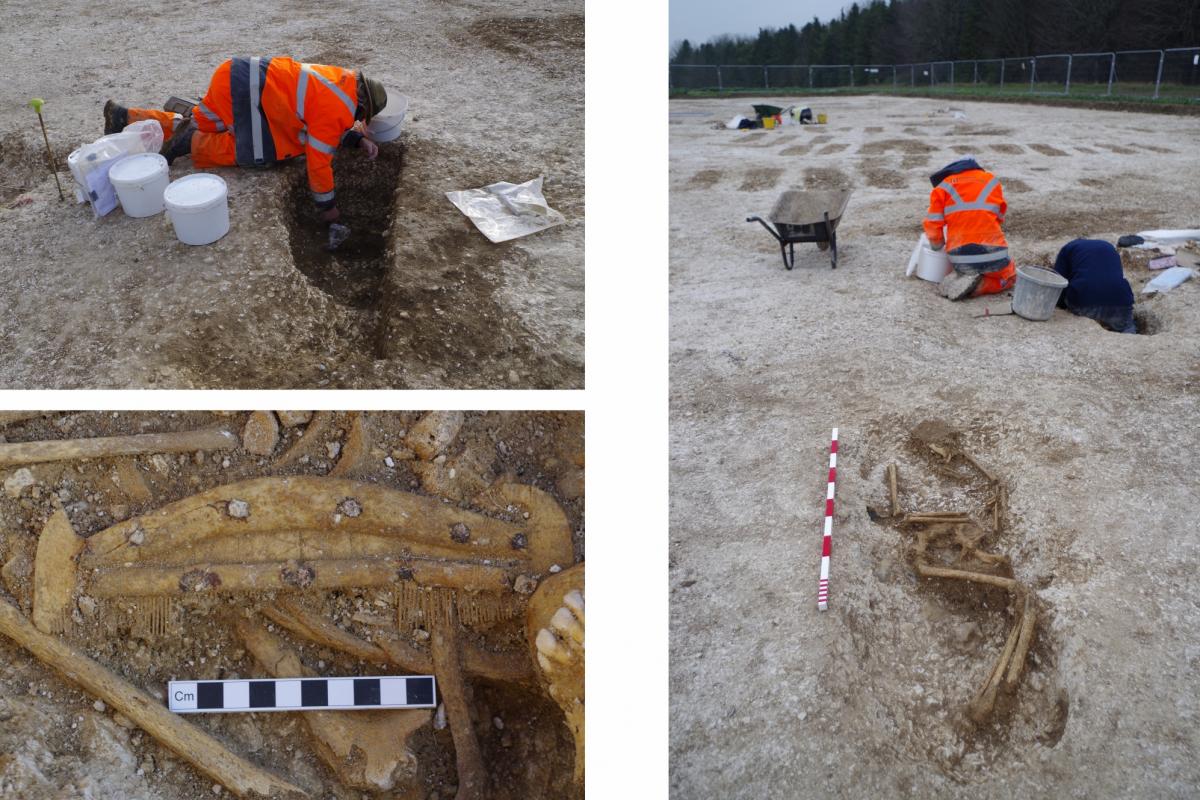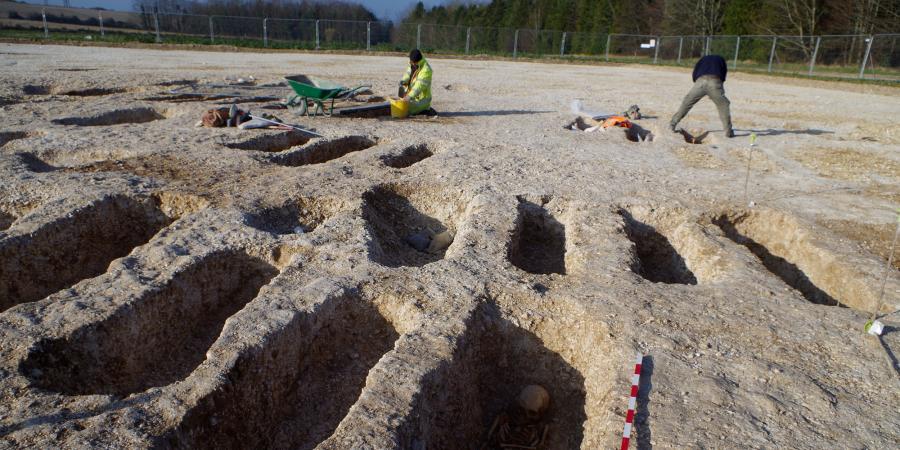Prehistoric monuments, Saxon graves and military features from WW1 and WW2 have been uncovered during pre-development works on Ministry of Defence land in Bulford, Wiltshire, which is earmarked for 227 new Army family homes.
Archaeological features were first discovered during pre-planning application trenching by Wessex Archaeology working for the Defence Infrastructure Organisation (DIO) and its consultants WYG. Further investigations revealed an Anglo-Saxon cemetery of about 150 graves, with grave goods including spears, knives, jewellery, bone combs and other personal items. One of the burials has been radiocarbon dated to between AD 660 and 780 which falls in the mid-Anglo-Saxon period in England.

The site’s development is part of wider plans to accommodate the 4000 additional Service personnel plus their families who will be based on and around Salisbury Plain by 2019 under the Army Basing Programme. In total, the MOD is planning to invest more than £1 billion in the area which will provide 1017 new homes for service families, 2500 new bed spaces for single soldiers and the construction, conversion or refurbishment of 250 other buildings within bases, such as offices, garages, workshops and Mess facilities.
DIO Project Manager Andy Corcoran said: “The discovery of this important Saxon cemetery was completely unexpected. Every care has been taken to ensure that all the archaeological remains on the site have been carefully excavated and recorded, as part of the MOD’s continuing stewardship of the archaeology of Salisbury Plain.”
A further phase of excavation is planned to examine the two adjacent prehistoric monuments beside which the Saxon cemetery was established. These appear to consist of Early Bronze Age round barrows that may have earlier, Neolithic origins. They are to be granted scheduled monument protection by Historic England and will be preserved in situ in a part of the site that will remain undeveloped. Neolithic pits outside the monuments contained decorated ‘Grooved Ware’ pottery, stone and flint axes, a finely made disc-shaped flint knife, a chalk bowl, and the bones of red deer, roe deer and aurochs (wild cattle).
During WW1 the site was used as a practise trench training area and there is evidence to suggest that a field farrier may have re-shoed horses and mules there before they were sent off to war. The site was also home to WW2 anti-tank firing ranges.
To find out more about this site click on this link.
